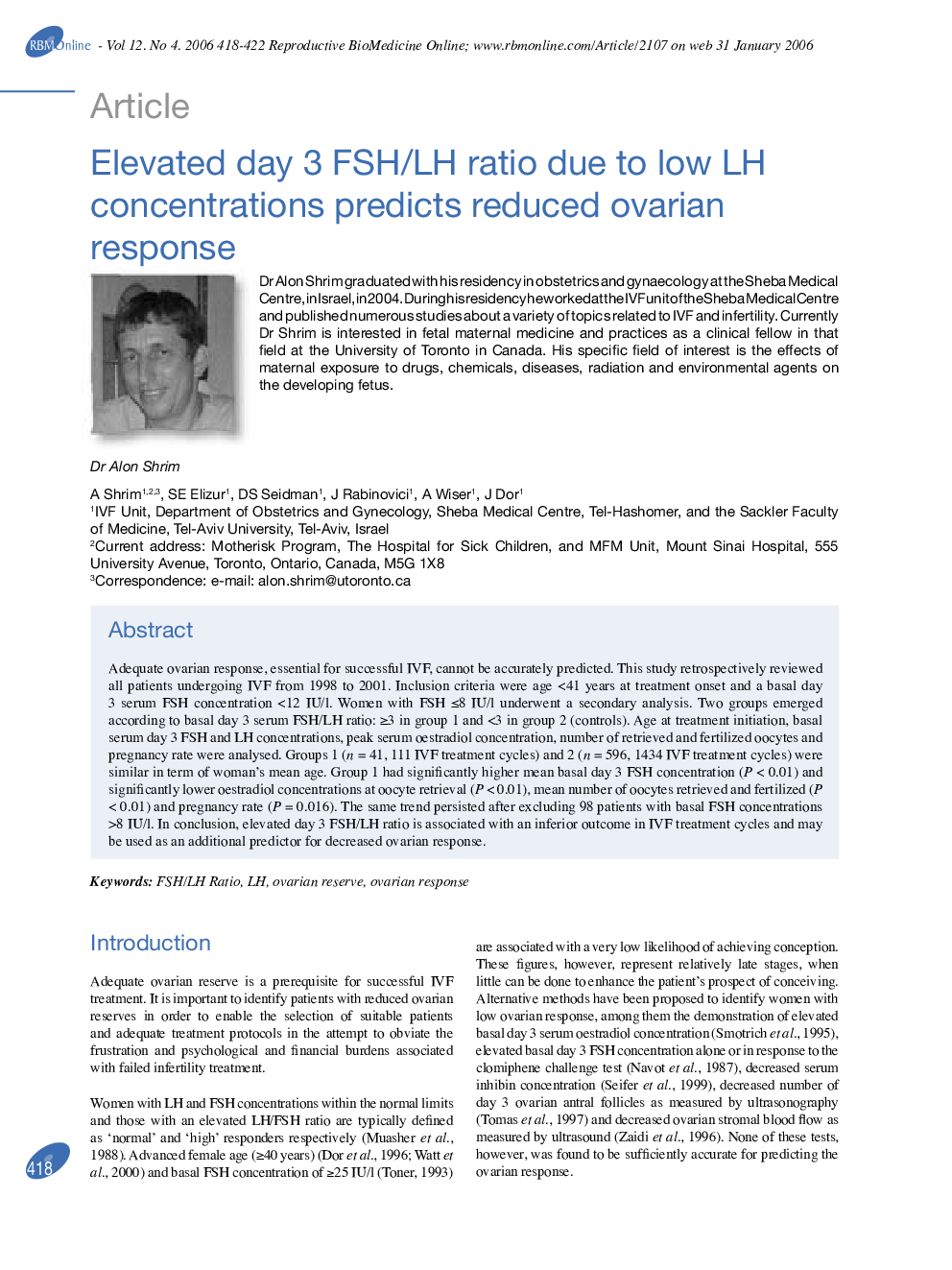| Article ID | Journal | Published Year | Pages | File Type |
|---|---|---|---|---|
| 3973515 | Reproductive BioMedicine Online | 2006 | 5 Pages |
Adequate ovarian response, essential for successful IVF, cannot be accurately predicted. This study retrospectively reviewed all patients undergoing IVF from 1998 to 2001. Inclusion criteria were age <41 years at treatment onset and a basal day 3 serum FSH concentration <12 IU/l. Women with FSH ≤8 IU/l underwent a secondary analysis. Two groups emerged according to basal day 3 serum FSH/LH ratio: ≥3 in group 1 and <3 in group 2 (controls). Age at treatment initiation, basal serum day 3 FSH and LH concentrations, peak serum oestradiol concentration, number of retrieved and fertilized oocytes and pregnancy rate were analysed. Groups 1 (n = 41, 111 IVF treatment cycles) and 2 (n = 596, 1434 IVF treatment cycles) were similar in term of woman's mean age. Group 1 had significantly higher mean basal day 3 FSH concentration (P < 0.01) and significantly lower oestradiol concentrations at oocyte retrieval (P < 0.01), mean number of oocytes retrieved and fertilized (P < 0.01) and pregnancy rate (P = 0.016). The same trend persisted after excluding 98 patients with basal FSH concentrations >8 IU/l. In conclusion, elevated day 3 FSH/LH ratio is associated with an inferior outcome in IVF treatment cycles and may be used as an additional predictor for decreased ovarian response.
